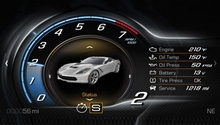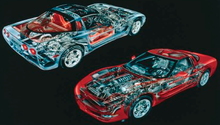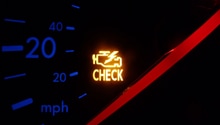Corvette: Why is My Transmission Slipping?
A slipping transmission can be a big problem. Learn what to do about it here.
This article applies to C5, C6, and C7 Corvette (1997-2019).
With something as sophisticated as a transmission, an ounce of prevention is definitely worth a pound of cure. That said, the units in the Corvette are pretty stocky. For that reason, "slipping" is generally something that should cause worry. Before taking it to the shop, there are a few things that can be done to identify the problem and determine how much it'll cost.
Before doing anything, reference the owner's manual for transmission service intervals. Take it in every 50,000 miles for hard or performance driving, and every 100,000 miles for normal driving.

Initial Inspection
Right off the bat, it's a good idea to do a quick visual inspection of the transmission area. There are a number of ways you can tell if your transmission is ailing. Like a doctor, use your senses.
- Do you see any pools of reddish liquid on your garage floor? If so, there's a puncture or a crack in the transmission housing. Follow the red fluid.
- Does the transmission fluid smell "hot" or burnt? If so, the transmission is overheating. Most likely this is caused by a low fluid level or a blocked transmission cooler.
- Does the transmission feel like it lags for half a second after an aggressive stop followed by acceleration? This is normal behavior. The same thing happens when coasting with a closed throttle and then accelerating. Torque the management system, taking control to reduce driveline lash.
Check for Diagnostic Trouble Codes
C5 Corvettes have a nifty little window under the speedometer and tachometer called the Driver Information Center. It's possible to manually pull up stored Diagnostic Trouble Codes (DTCs) here. If there's trouble with the transmission, there'll likely be codes stored here. Watch the video below to learn how to use this feature. C6 Corvette owners aren't so lucky. They'll need to buy or borrow an OBD code scanner to access these codes.
Once the codes have been retrieved, check them against the following lists (in the Related Thread) to learn what they mean. These codes should narrow down the possible sources of transmission trouble.
(Related Thread: C5 Corvette: Diagnostic Trouble Codes PDF Reference - CorvetteForum.com)

Featured Video: Retrieving and Clearing Codes on a C5 Corvette
Engine Flare Service Bulletin
GM issued a Technical Service Bulletin (TSB) on Corvettes built between 2006 to 2009 concerning engine flares or "missed" shifts between second and third gears. The problem is caused by leaky clutch fluid seal rings. This might be the problem if the transmission consistently shifts poorly between second and third.
(Related Thread: Transmission Slipping PIP - CorvetteForum.com)
Other Causes
If you're not a mechanically inclined person, there's not much that can be done at home to fix a slipping transmission. The next step is to take it to a mechanic.
A transmission that has been excessively run on low fluid probably has internal damage. The bands may have come loose, which would cause sloppy, harsh shifting. Any internal damage will require a complete rebuild of the transmission, which typically costs north of $1,500.
Luckily, the transmission in the Corvette isn't prone to damage under normal and hard use. If there's a problem, it'll have likely come from external damage to the transmission or extremely high amounts of torque.
Related Discussions and Site
- Transmission Slipping - CorvetteForum.com
- Common Causes of Slipping Transmission - CorvetteForum.com
- 6L80E Transmission Info - Novak-Adapt.com






